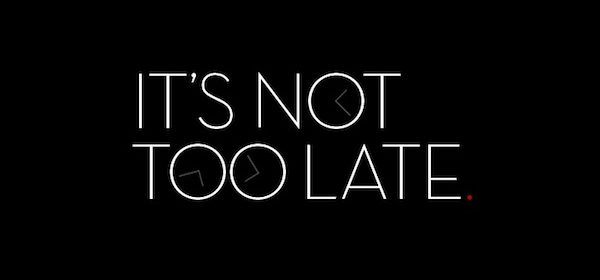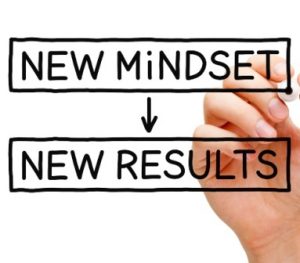It’s Never Too Late To Get Fit
 If you’ve given up ever becoming fit again or losing weight, change your mind. No matter what age you are or how out of shape you are it’s never too late to get fit. The more out of shape you are, the slower the initial process. The same is true for those with health issues and seniors. Seniors, in particular may see slower results than their younger counterparts and those results slip away quicker when exercise is discontinued. However, it can be done with consistency and dedication.
If you’ve given up ever becoming fit again or losing weight, change your mind. No matter what age you are or how out of shape you are it’s never too late to get fit. The more out of shape you are, the slower the initial process. The same is true for those with health issues and seniors. Seniors, in particular may see slower results than their younger counterparts and those results slip away quicker when exercise is discontinued. However, it can be done with consistency and dedication.
There are people older or in worse shape than you that have managed to get fit.
You might not expect a supreme court justice that’s 85 to be an avid gym attendee, but that’s because you may not have seen the vigorous workout of Justice Ruth Bader Ginsburg. Her workouts vary and are done with a trainer, but start with stretching, strength training and body weight exercises, like pushups and planks. She’s an 85 year old woman, so if you’re in your 40s surely you can build up to her standards. Another story came from a man that was so heavy, he had leg and hip problems with doctors giving him only a few months to live. He started by walking just a few steps outside, then extended it to the corner, then around the block. He lost hundreds of pounds over a few years and now runs marathons—with no health issues.
Start small and work toward bigger.
You don’t have to and shouldn’t do a tough workout that was created for people in good shape the first time you workout. Overdoing it the first few times will most likely make you want to quit or could be hazardous. That’s why personal trainers always assess each person’s fitness level to ensure they have a program that’s tough, but safely doable.
Change your eating habits.
Sure, you may always eat a Snickers or an order of fries right after work, but look at where that got you. Skip a day, but allow yourself to have fries the next day or cut that Snickers bar in two and eat it two days if you can’t simply drop the habit. After a few days off eating half, eat only a quarter a day and eventually none. Start making substitutions. Instead of weaning yourself off fries or candy, substitute a piece of fruit or a small serving of nuts. You’ll lose weight making a few changes at a time.
- Plan meals rather than wait until the last minute. If you plan ahead, you’ll be able to eat healthier. Some people make the meals on the weekend because their weekly schedule is hectic.
- Change out water for soft drinks and skip the sugar and cream in your coffee. Soft drinks provide nothing but extra calories and do have other health risks. Don’t consider diet soda, since there are issues with those, too.
- Learn to cook differently. Just substituting some applesauce for oil or sugar can save calories but leave baked goods tasting just as yummy. Grilling, broiling or steaming can replace frying, making food healthier in the process.
- As long as you’re breathing, you can do something to make your life healthier. There’s no better time to start than today.



 Don’t be intimidated by the concept of healthy eating. It doesn’t have to be hard. In fact, it can be easier than you think. When it comes to healthy eating, you don’t have to reinvent the wheel. You can use the information already compiled with shopping lists and menus. If that isn’t satisfactory or you simply want to learn to do it on your own, you can start by making small changes and work your way toward a healthy diet as you go.
Don’t be intimidated by the concept of healthy eating. It doesn’t have to be hard. In fact, it can be easier than you think. When it comes to healthy eating, you don’t have to reinvent the wheel. You can use the information already compiled with shopping lists and menus. If that isn’t satisfactory or you simply want to learn to do it on your own, you can start by making small changes and work your way toward a healthy diet as you go.
 Some people have tried to lose weight before and failed. Then sometimes sabotage their efforts and why? It’s because they don’t believe they either deserve or can achieve success when it comes to fitness and weight loss. You can get the body you want by changing your mind. I tell clients in Raleigh that success comes with the right attitude and consistency. Changing doesn’t occur overnight. It’s the compilation of many small changes that add up to huge benefits.
Some people have tried to lose weight before and failed. Then sometimes sabotage their efforts and why? It’s because they don’t believe they either deserve or can achieve success when it comes to fitness and weight loss. You can get the body you want by changing your mind. I tell clients in Raleigh that success comes with the right attitude and consistency. Changing doesn’t occur overnight. It’s the compilation of many small changes that add up to huge benefits.
 Yes, the paleo diet does tell you to eat like cavemen, but if you’re eating in Raleigh, NC capturing your prey and foraging the woods for berries and greens isn’t a lifestyle everyone can follow. However, the concept of eating similar foods to that of a caveman is a far healthier idea than the average American’s diet today. Cavemen didn’t farm, an agrarian society didn’t exist at that time. It’s doubtful they had milk products, although no one is sure whether these nomads first used antelopes for milk.
Yes, the paleo diet does tell you to eat like cavemen, but if you’re eating in Raleigh, NC capturing your prey and foraging the woods for berries and greens isn’t a lifestyle everyone can follow. However, the concept of eating similar foods to that of a caveman is a far healthier idea than the average American’s diet today. Cavemen didn’t farm, an agrarian society didn’t exist at that time. It’s doubtful they had milk products, although no one is sure whether these nomads first used antelopes for milk.
 There’s nothing new about a low carb diet. In the 1920s it was used to help control seizures. Prior to that fasting was used for 1400 years, but you can easily see why that wasn’t sustainable. (
There’s nothing new about a low carb diet. In the 1920s it was used to help control seizures. Prior to that fasting was used for 1400 years, but you can easily see why that wasn’t sustainable. (
 If fitness were like painting a room or completing a paper, you could muscle through it. However, it’s a commitment that requires daily attention for the rest of your life. Dreading your workout or resenting healthy eating over the long haul will take its toll. In order to be successful for the rest of your life, you need to fall in love with fitness, so it’s something you look forward to achieving. That requires taking a close look at both the benefits and why you hate doing it so much.
If fitness were like painting a room or completing a paper, you could muscle through it. However, it’s a commitment that requires daily attention for the rest of your life. Dreading your workout or resenting healthy eating over the long haul will take its toll. In order to be successful for the rest of your life, you need to fall in love with fitness, so it’s something you look forward to achieving. That requires taking a close look at both the benefits and why you hate doing it so much.
 I saw one of my clients wearing a T-shirt that said, “Sweat Is Just Your Fat Crying,” and I loved it. While it isn’t scientifically accurate, who cares, it’s a fun phrase that helps you remember that when you work hard, you get results. However, just because you sweat, it doesn’t mean you’ve gotten the best workout or put in the effort required to shed those extra pounds and build muscle tissue. A lot of things can cause sweating. Some people sweat more than others normally. The room could be warm or you could have just eaten a super spicy hot pepper dish. You really don’t build muscle tissue in a steam room, but you’ll probably sweat more in there than you do in the gym.
I saw one of my clients wearing a T-shirt that said, “Sweat Is Just Your Fat Crying,” and I loved it. While it isn’t scientifically accurate, who cares, it’s a fun phrase that helps you remember that when you work hard, you get results. However, just because you sweat, it doesn’t mean you’ve gotten the best workout or put in the effort required to shed those extra pounds and build muscle tissue. A lot of things can cause sweating. Some people sweat more than others normally. The room could be warm or you could have just eaten a super spicy hot pepper dish. You really don’t build muscle tissue in a steam room, but you’ll probably sweat more in there than you do in the gym.
 Dehydration can occur quite easily, especially if you’re working out in the summer heat. It can be so severe that it even causes death. However, there are types of mild dehydration that may occur every day that don’t have an immediate obvious effect, but can cause damage that can range from mild to severe. The body requires water. In fact, about 60 percent of the body is water, with up to 73 percent of the brain and heart water, 83 percent of the lungs water and even though it may not seem like it, the bones even have a high percentage of water, 31 percent! To avoid a serious condition, whether acute or chronic, you need to look for signs you might need to drink more water
Dehydration can occur quite easily, especially if you’re working out in the summer heat. It can be so severe that it even causes death. However, there are types of mild dehydration that may occur every day that don’t have an immediate obvious effect, but can cause damage that can range from mild to severe. The body requires water. In fact, about 60 percent of the body is water, with up to 73 percent of the brain and heart water, 83 percent of the lungs water and even though it may not seem like it, the bones even have a high percentage of water, 31 percent! To avoid a serious condition, whether acute or chronic, you need to look for signs you might need to drink more water
 You don’t have to be aging to find yourself at a loss for that one specific word or forget where you left your keys. However, as you age, forgetting things may occur more frequently. Whether you’re facing your senior years, in your senior years or just a young kid, boosting your memory can be a huge help whether in class or on the job. It also can be quite reassuring the older you get. You can improve your memory with spinach and many other foods. There are also other ways a healthier lifestyle helps you improve your recall.
You don’t have to be aging to find yourself at a loss for that one specific word or forget where you left your keys. However, as you age, forgetting things may occur more frequently. Whether you’re facing your senior years, in your senior years or just a young kid, boosting your memory can be a huge help whether in class or on the job. It also can be quite reassuring the older you get. You can improve your memory with spinach and many other foods. There are also other ways a healthier lifestyle helps you improve your recall.
 You know I’m always advocating for healthier eating and getting more nutrition from healthier foods. That’s why adding spices and herbs can enhance the nutritional value of a meal, without adding extra calories. There are all types to choose from, but I’m focusing on adding turmeric for a healthier meal because it can also help you get the most out of your workout. You have endothelial cells that line your veins and arteries. These have an impact on your blood pressure, heart health and immune function. Exercise enhances nitric oxide, which relaxes the vessels and increases blood flow to provide a healthier heart. In fact, it works much like nitroglycerin. Curcumin boosts the benefits of exercise.
You know I’m always advocating for healthier eating and getting more nutrition from healthier foods. That’s why adding spices and herbs can enhance the nutritional value of a meal, without adding extra calories. There are all types to choose from, but I’m focusing on adding turmeric for a healthier meal because it can also help you get the most out of your workout. You have endothelial cells that line your veins and arteries. These have an impact on your blood pressure, heart health and immune function. Exercise enhances nitric oxide, which relaxes the vessels and increases blood flow to provide a healthier heart. In fact, it works much like nitroglycerin. Curcumin boosts the benefits of exercise.